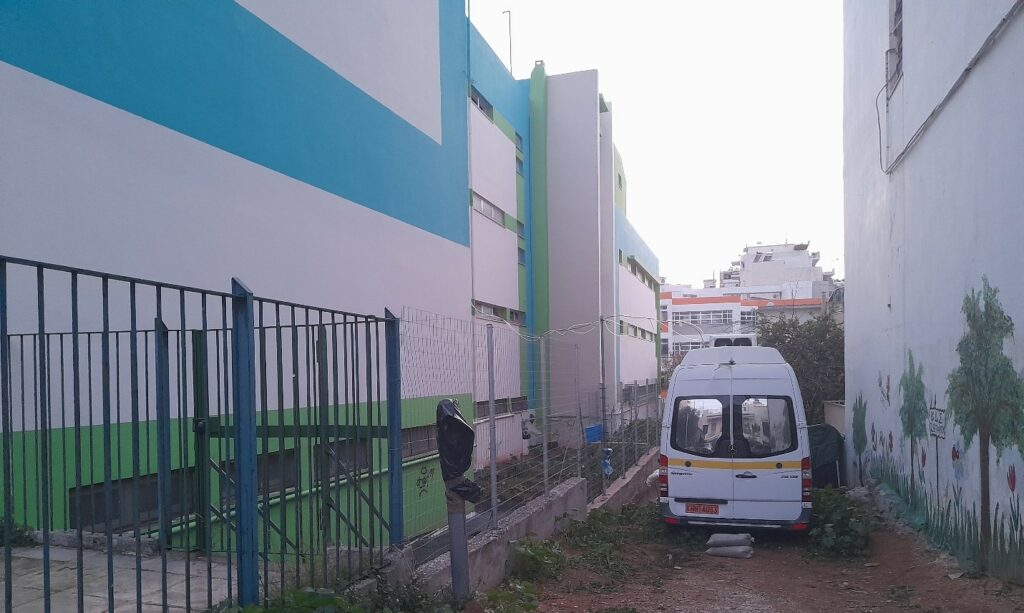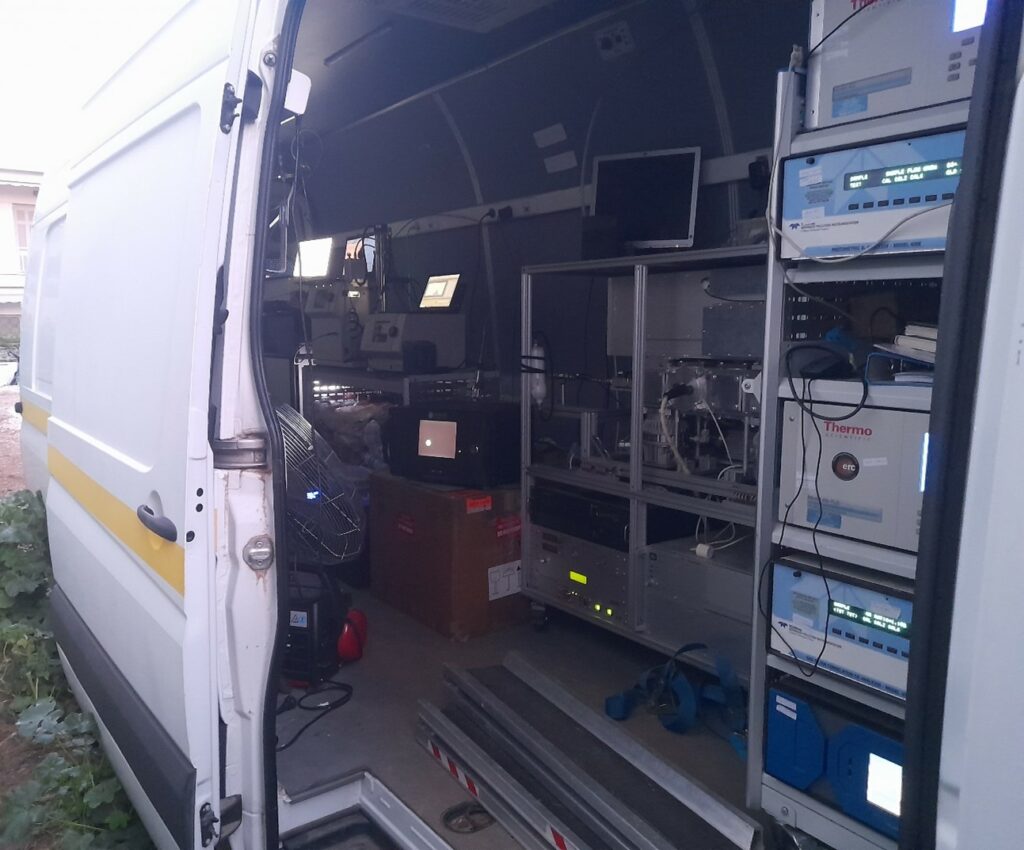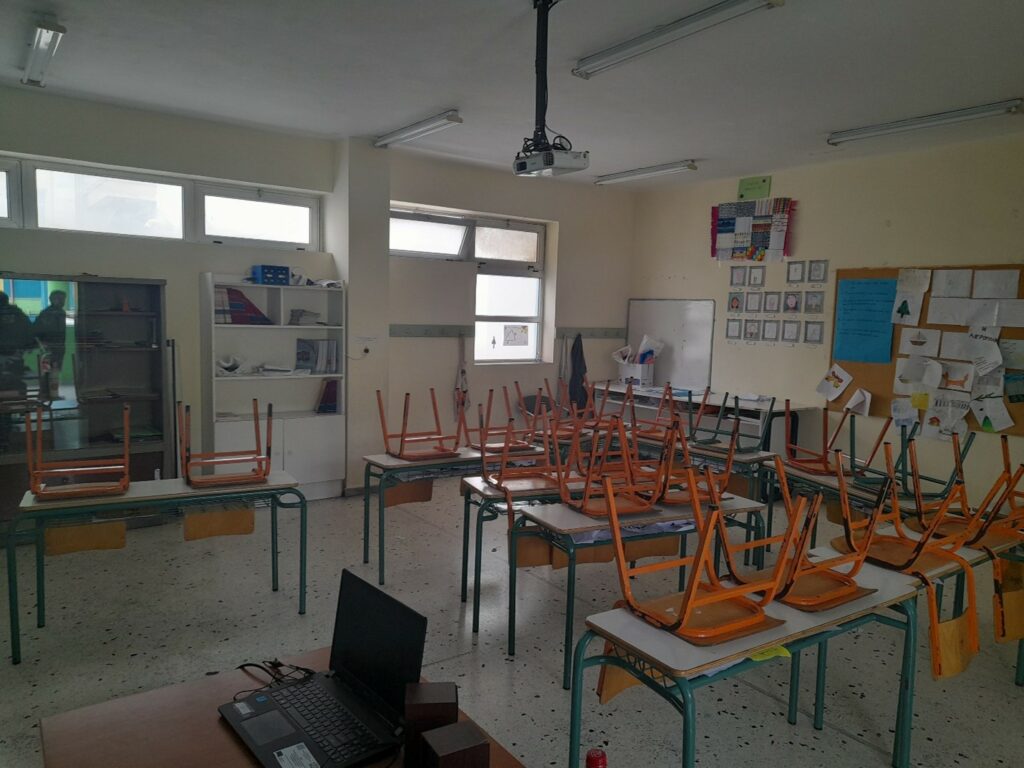The FORTH team performed the first comprehensive air quality monitoring SynAir-G campaign inside and outside the 8th Elementary School of Zografou in Athens from January 25 to February 17, 2024.
The main objectives of the campaign were to:
- Monitor gas and particulate air pollutants inside a classroom with state-of-the-art continuous instruments and low-cost sensors.
- Monitor the air outside the school with the same sets of instruments.
- Develop appropriate calibration approaches for the low-cost sensors for a typical classroom using machine learning algorithms.
- Characterize the volatile organic compounds in the classroom continuously using high mass resolution proton-transfer time-of-flight mass spectrometry (PTR-ToF/MS).
- Quantify the sources of air pollutants in the studied classroom.
The study combined low-cost sensor measurements (the FORTH ENSENSIA system) alongside high-end instrumentation. The ENSENSIA box includes electrochemical sensors measuring CO2, CO, NOx, O3, SO2, PM2.5, total VOCs, HCHO, temperature and relative humidity. The high-end instrumentation included several monitors for CO2, CO, NOx, O3, SO2, an aethalometer for black carbon, a Scanning Mobility Particle Sizer for particle size distributions and the PTR-ToF/MS for continuous measurements of individual volatile organic compounds.
The monitoring equipment included 5 ENSENSIA low-cost sensor systems, 2 placed inside the classroom and 3 outdoors. The high-end instrumentation was inside the FORTH mobile lab, which was parked outside the school but near the classroom. An automatic valve mechanism was used to interchange between indoor and outdoor measurements for the high-end instrumentation every 20 min.
The results of the measurements are currently analyzed by the FORTH team.



